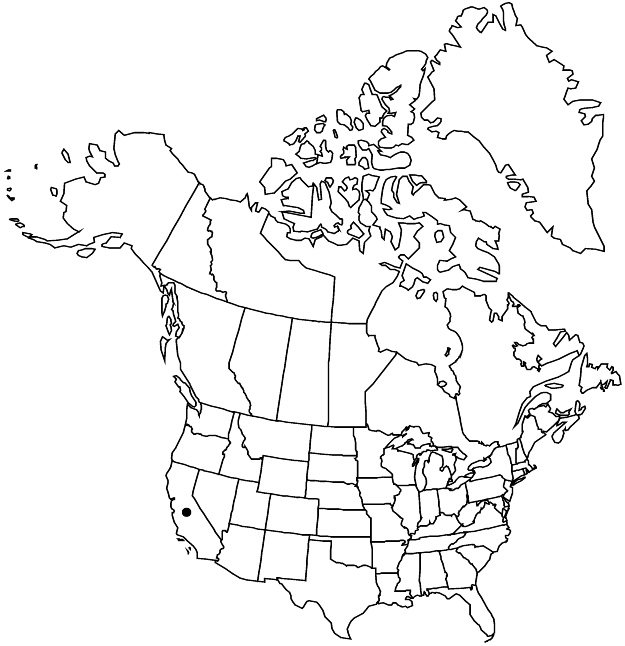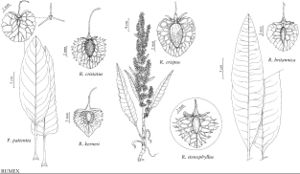Rumex kerneri
Fl. Comit. Temesiensis, 60. 1884.
Plants perennial, distinctly papillose especially or almost exclusively on veins of leaf blades abaxially, with fusiform, vertical rootstock. Stems erect, branched from above middle or in distal 2/3, 50–100(–150) cm. Leaves: ocrea deciduous or partially persistent at maturity; blade broadly lanceolate to oblong-lanceolate, normally 15–25 × 5–9 cm, base truncate or slightly cordate, margins entire, undulate or weakly crisped, occasionally flat, apex acute or attenuate. Inflorescences terminal, occupying distal 1/2–2/3 of stem, normally dense or interrupted near base, broadly paniculate (branches mostly simple or nearly so), branches usually straight or arcuate, rarely indistinctly flexuous. Pedicels articulated near middle, filiform, 6–12 mm, articulation distinctly swollen. Flowers 15–20 in whorls; inner tepals orbiculate, 6–8(–9) × 6–7.5(–8) mm, base usually distinctly cordate, margins entire or subentire near apex, denticulate or dentate near base, apex acute or subacute, teeth to 0.5 mm; tubercle normally 1 (rarely 3, then distinctly unequal), less than 2 times as wide as inner tepals. Achenes dark brown or brown, 2.5–3.3 × 1.8–2.3 mm. 2n = 80.
Phenology: Flowering late spring–early summer.
Habitat: Ruderal habitats: roadsides, waste places
Elevation: 0-500 m
Distribution

Calif., se Europe.
Discussion
Rumex kerneri is known in North America only from California, where it occurs mostly in Santa Barbara and San Luis Obispo counties. It is closely related to and has been regarded as a subspecies of R. cristatus.
Selected References
None.
